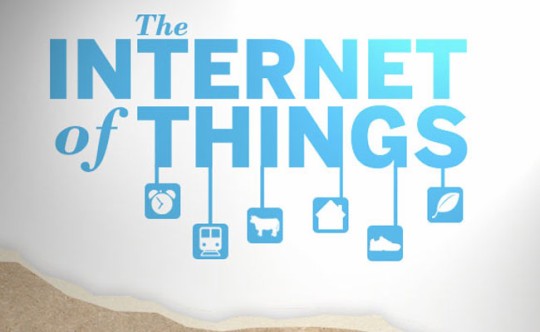 NEWS
NEWS
 NEWS
NEWS
 NEWS
NEWS
2013 is said to be the year of the Internet of Things, but seriously, do we really know what IoT is all about?
The phrase “Internet of Things” was first coined by technologist Kevin Ashton way back in 1999, when he used it to describe how data captured by humans would lead to a revolution once computers started generating and collecting data by themselves without any human input.
The Internet of Things is not just about connecting devices to the Internet, but also making sense of the ‘things’ that are connected. Take for example a car. If your car can connect to the Internet, that by itself isn’t really anything special. After all, it’s just a car that can be hooked up to the Internet. But what if your car could do USE its Internet connection to help make your life better? That’s where IoT comes to play. By connecting your car to the Internet, drivers gain access to real-time traffic data, which means they can see when certain roads are closed, which roads are insanely congested, and get advance warning of any accidents. In addition, the IoT means that drivers can get directions to places they’re unfamiliar with, and it could even help them avoid getting into a collision by applying the emergency brakes when the they’re not concentrating. This is just one example of how IoT can benefit people’s lives.
“The IoT is removing mundane repetitive tasks or creating things that just weren’t possible before, enabling more people to do more rewarding tasks and leaving the machines to do the repetitive jobs,” says Grant Notman, Head of Sales and Marketing at Wood & Douglas, a company that manufactures wireless communications hardware for IoT applications.
According to Cisco, there will be 25 billion connected things by 2015, which, if you consider the UN’s projected population growth of 7.8 billion in 2018, means that there will be more connected devices than people on the planet within the next five years. And all of this has been made possible thanks to the “new” Internet.
The new Internet, Internet Protocol Version 6, or IPv6, was recently switched on. Though not many of noticed anything at the time, in a few years we surely will as it helps propel the IoT. With IPv6, there are now more than a trillion, trillion, trillion unique IPs in the world, which means there’s space for ANYTHING and EVERYTHING to be fitted with sensors and connected to the internet.
Right now, we already have fitness bands that tells us our heart rate, calories burned, steps taken and so on. We also have smartphones that automatically change profiles depending on where we are, based on their WiFi connection and other details. Then we have smart cars than can assist drivers with parallel parking; apps that let us pay for items just by tapping our phones onto a sensor; TVs that can be controlled with gestures or voice; and even sensors on cows that alert farmers if the animal’s sick or pregnant.
The possibilities are endless especially now that companies are able to manufacture minuscule chips and sensors that can be placed virtually anywhere, even on a person’s skin or even inside one of our organs. These connected devices will ultimately be able to help people achieve their full potential.
Wouldn’t it be nice if we lived in a world where we really didn’t have to do anything at all, precisely because everything we need can be made available as soon as we wake up?
Imagine for a moment, living in a home where ‘everything’ is connected. As soon as your wake up, you connected bed or pillow tells the TV to switch on so you can watch the morning news. Meanwhile, the coffee maker goes to work, and depending on how well you slept, the machine adjusts how strong your coffee will be. When you get to the shower, the water will be set to the temperature based on how hot or cold the weather is. When you go to your bathroom mirror, it tells you if you need to shave, and reminds you to brush your teeth. When you get to the closet, the mirror helps you pick out your outfit for the day, taking into account when you’re headed too. Then before you head out, a screen or a window on your door reminds you of the things you need to bring, and issues your schedule for the day based on the data in your smartphone or tablet.
This, dear readers, is the future of the Internet of Things.
We’re not quite there yet though. According to an article on Wired, one of the biggest obstacles the IoT faces is the closed nature of the technology in our lives, such as the various operating systems used in devices that make things incompatible with one another. Another obstacle comes in the form of service providers, not too mention the ‘ease of use’ of the IoT. The article points out that for IoT to flourish, companies should make open APIs that would enable easier data sharing, create “software that is powerful, elegant, and easy to use.
Then again, there’s one question that’s yet to be answered – do people really want the Internet of Things?
Though living a life where everything can be had at the tap of an app on your smartphone sounds like the ultimate dream for some, its fair to say that not everyone is keen on having every aspect of their lives ruled by some app, stored in the cloud, and accessible to all.
THANK YOU